1. Start with a stellar photo
Your profile picture is your first impression. Choose a clear, professional headshot with good lighting where you're dressed appropriately for your industry. No clubbing photos or extreme cropping from group shots (we can all tell when your ex is just outside the frame).
LinkedIn data shows profiles with professional photos receive 14 times more views.
2. Craft a headline that pops
Your headline follows you everywhere on LinkedIn - in search results, connection requests, and comments. Don't just list your job title. Use those 220 characters to showcase your specialty, value proposition, or unique professional identity. Instead of "Marketing Manager," try "Marketing Manager Turning Data Stories into Revenue Growth | Helping Tech Brands Connect with Gen Z."
3. Tell your story with a compelling about section
This is your chance to shine beyond bullet points. Write in first person and share:
- What drives you professionally
- Your key accomplishments
- How you approach your work
- What you're looking to accomplish next
Keep it authentic but professional, and around 3-5 short paragraphs for readability.
4. Showcase your experience with results
LinkedIn isn't just an online resume - it's your professional highlight reel. For each role:
- Include measurable achievements (numbers, percentages, revenue impacts)
- Spotlight projects you led and their outcomes
- Mention recognitions and awards
- Incorporate relevant keywords for your industry
5. Add in your skills & endorsements
For this section, think quality over quantity. Focus on skills that truly represent your expertise and are relevant to your career or business goals.
Organize them in order of importance, and don't be shy about asking colleagues to endorse your top skills. Having 5+ endorsements for key skills significantly increases your searchability.
6. Don’t forget recommendations: the social proof gold standard
Nothing says "I actually deliver results" like a genuine recommendation. Proactively request recommendations from managers, colleagues, and clients who can speak to different aspects of your professional abilities.
Make sure you’re specific about what you'd like them to highlight to ensure diverse coverage of your skills.
7. Engage, Engage, Engage!
The LinkedIn algorithm rewards active users by increasing their visibility. Set aside 15-20 minutes daily to:
- Share industry insights and articles
- Comment thoughtfully on other peoples’ posts
- Congratulate connections on their achievements
- Join and participate in relevant groups
Remember that guy who posts a daily "I'm grateful for..." with the sunrise photo? He might be onto something - consistent engagement builds your personal brand.
8. Learning & certificates
Completed courses or certifications? Show off that growth mindset and feature them prominently. LinkedIn Learning certificates automatically integrate with your profile, showcasing your commitment to professional development.
9. Don’t forget a custom URL
Claim your custom LinkedIn URL (linkedin.com/in/yourname) for a cleaner, more professional look that's perfect for business cards, email signatures, and resumes.
10. Give it a final polish
The details matter.
- Use the Featured section to highlight your work through media, links, and your best posts
- Add volunteer experience if you have it
- Include relevant organizations and causes you support
- Regularly update your profile to reflect new skills and accomplishments
LinkedIn profile examples
Let's explore some LinkedIn profiles that demonstrate effective strategies across different industries and career stages. Click here for more detailed LinkedIn profile examples.
The industry thought leader - The digital prophet
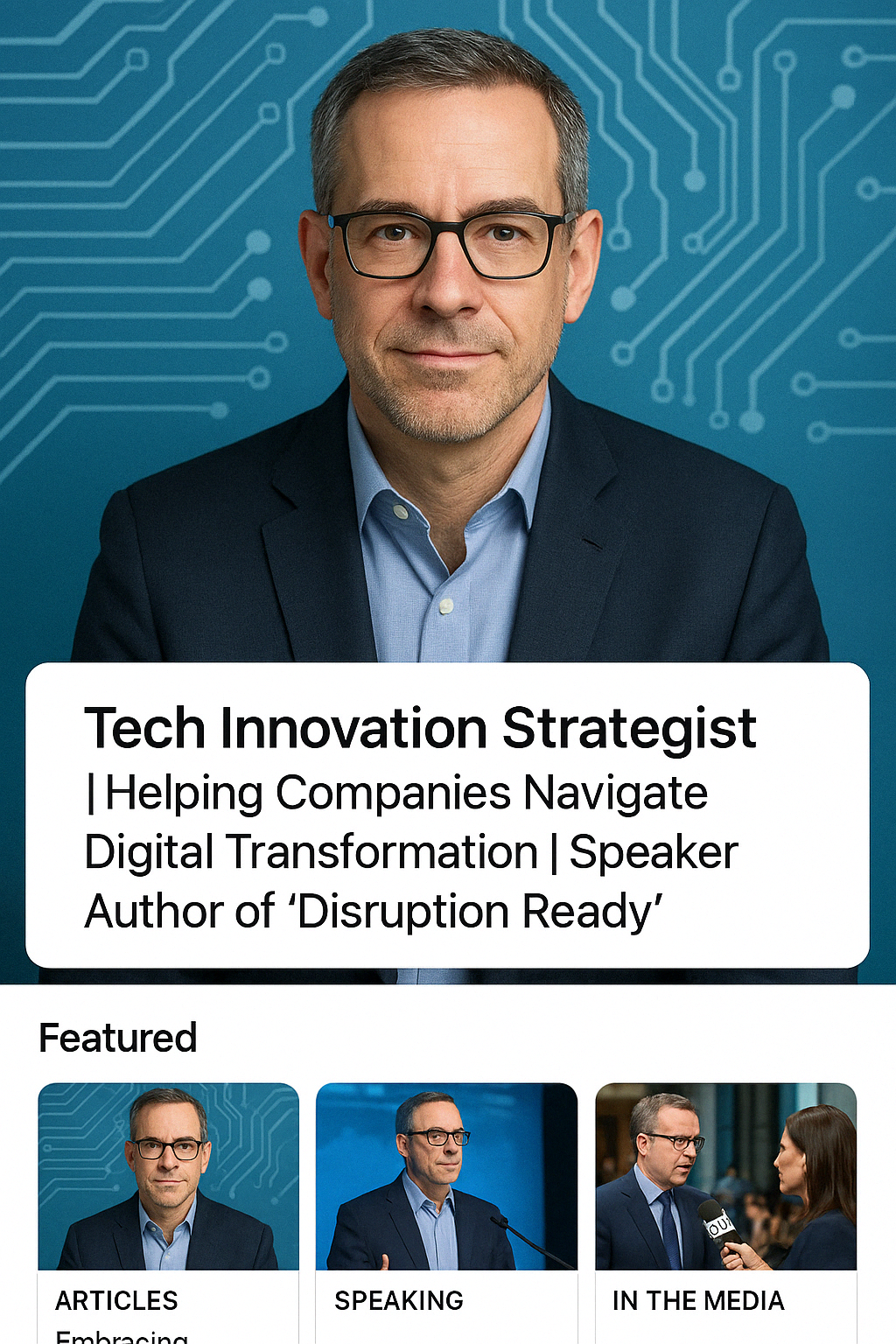
Headline example: Tech Innovation Strategist | Helping Companies Navigate Digital Transformation | Speaker | Author of 'Disruption Ready'
Why it works: This profile effectively combines expertise with a clear value proposition. The person positions themselves as both knowledgeable (strategist, author) and helpful (guiding companies through transformation). Their Featured section showcases articles they've written, speaking engagements, and media mentions that reinforce their thought leadership.
The career changer - The plot twist
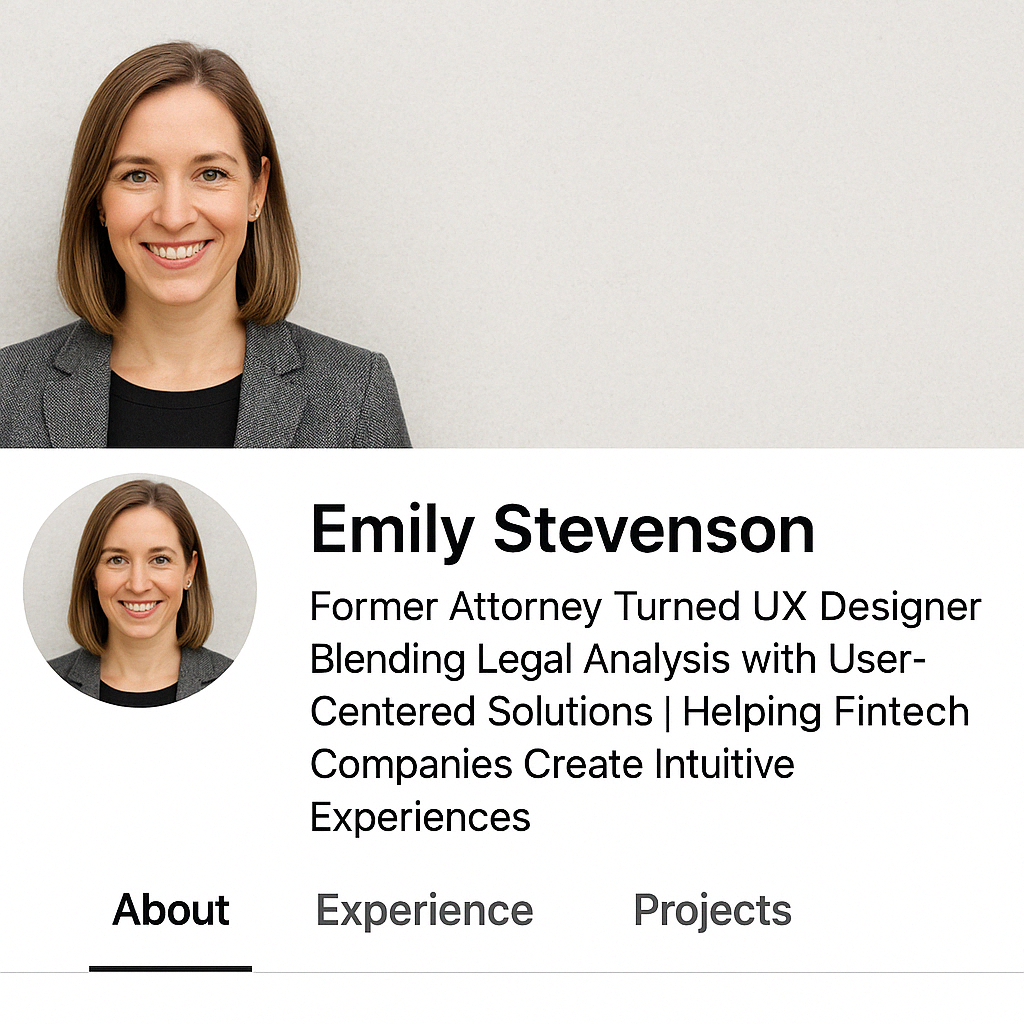
Headline example: Former Attorney Turned UX Designer | Blending Legal Analysis with User-Centered Solutions | Helping Fintech Companies Create Intuitive Experiences
Why it works: This profile directly addresses the career transition while demonstrating transferable skills. Their About section tells a compelling story of why they made the switch and how their unique background creates an advantage. Experience sections highlight relevant projects from both careers, creating a cohesive narrative.
The recent graduate - The fresh perspective
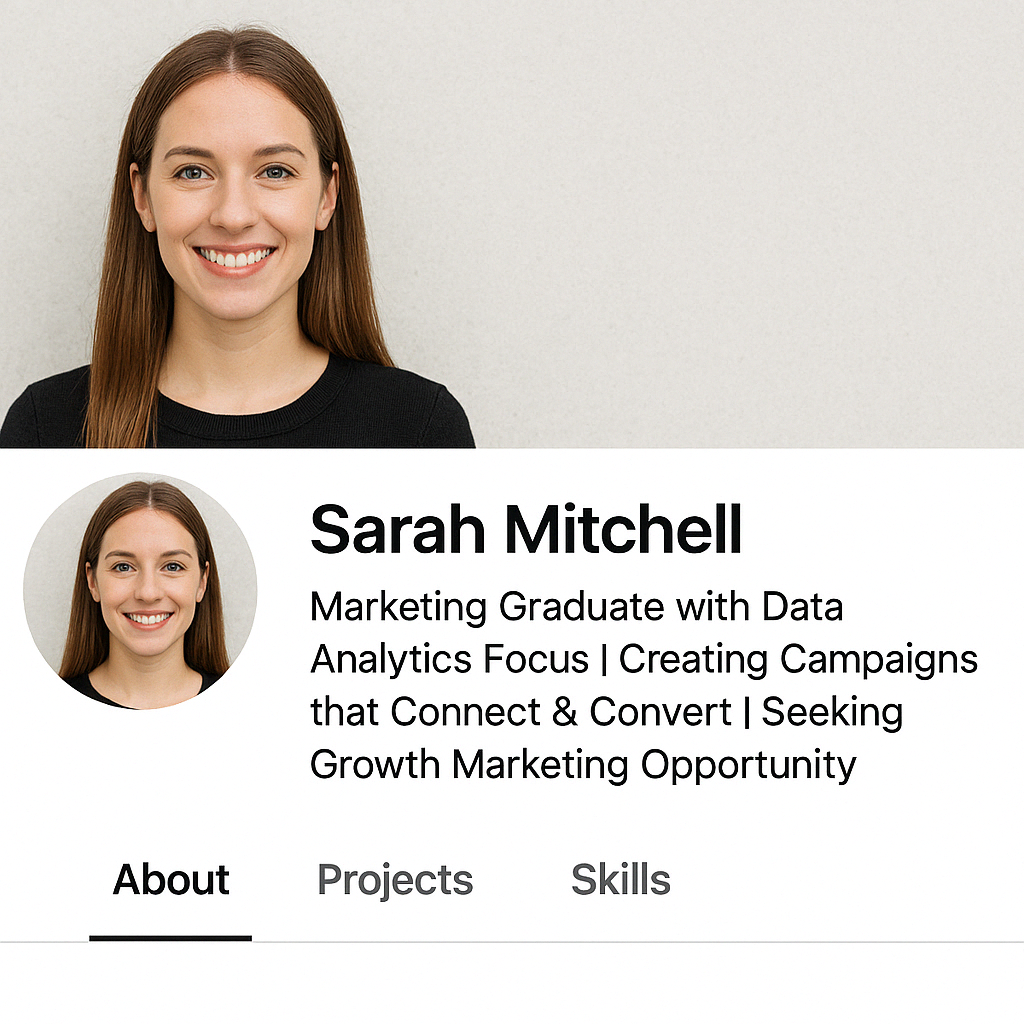
Headline example: Marketing Graduate with Data Analytics Focus | Creating Campaigns that Connect & Convert | Seeking Growth Marketing Opportunity
Why it works: Despite limited work experience, this profile emphasizes relevant skills, education, and clear career direction. The About section highlights specific projects, internships, and classroom experiences with measurable outcomes. Their Skills section is strategically organized around marketing analytics tools and techniques.
The creative professional - The pixel whisperer
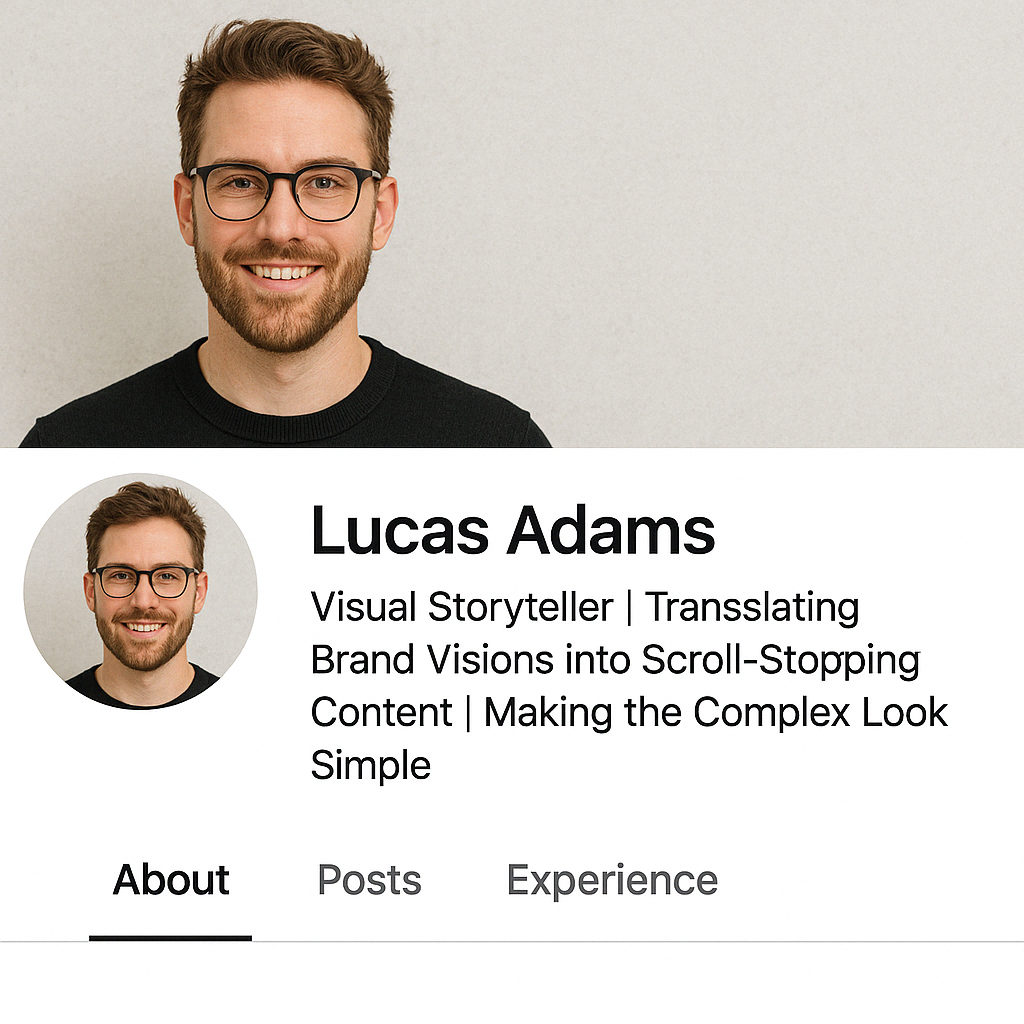
Headline example: Visual Storyteller | Translating Brand Visions into Scroll-Stopping Content | Making the Complex Look Simple
Why it works: This profile leverages rich media effectively with a gallery of work samples in the Featured section. Their About narrative shows both technical skills and strategic thinking. Recommendations specifically mention their creative problem-solving and collaborative process, not just the quality of deliverables.
The entrepreneurial spirit - The serial starter
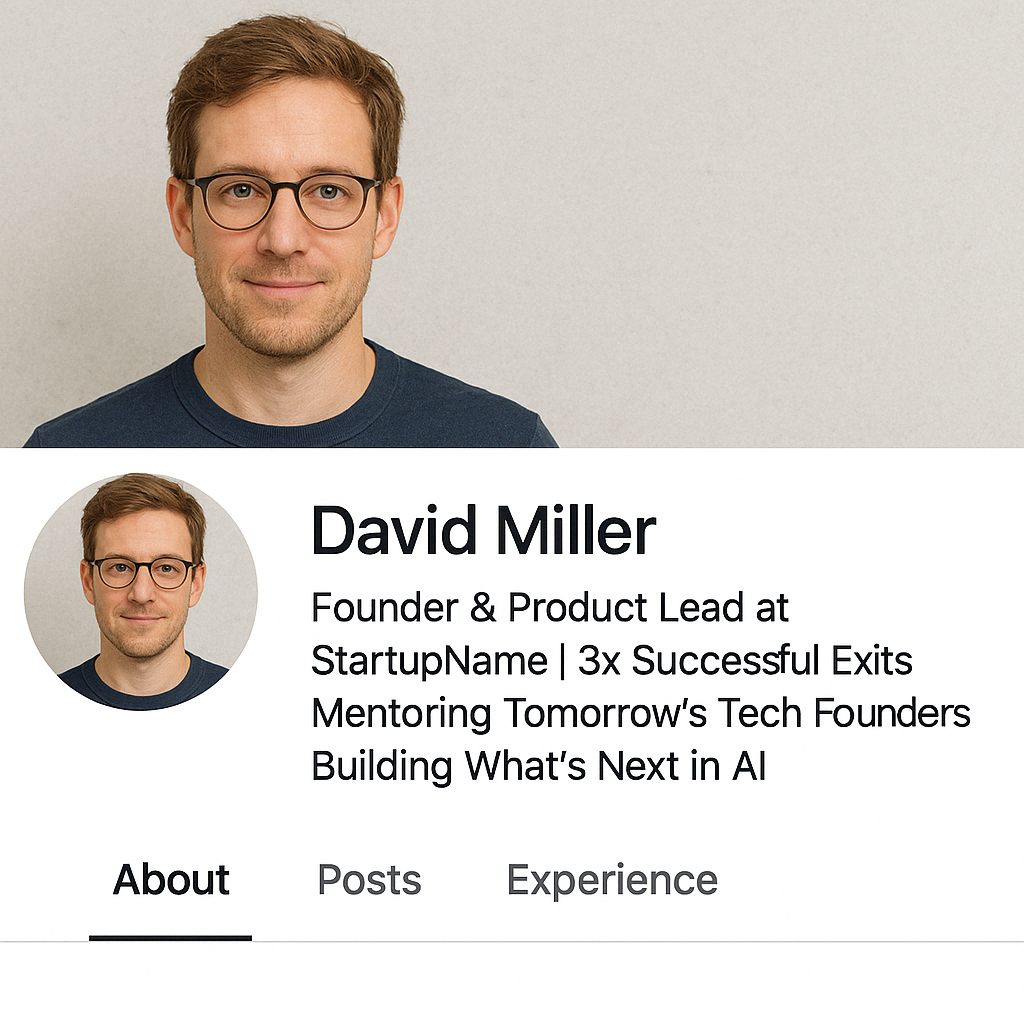
Headline example: Founder & Product Lead at StartupName | 3x Successful Exits | Mentoring Tomorrow's Tech Founders | Building What's Next in AI
Why it works: This profile balances accomplishments with forward momentum. Their Experience section details specific growth metrics and achievements for each venture. The About section shares lessons learned and their philosophy on innovation, making them approachable despite impressive credentials.
The common thread among these good LinkedIn profiles? They don't just list roles and responsibilities - they tell a story that connects their past experiences to future value. They use specific examples and metrics where possible, and maintain an authentic voice that gives you a sense of both their professional expertise and their approach to work.
Remember: your ideal profile might borrow elements from several of these examples. The best LinkedIn profiles aren't carbon copies, they're authentic showcases of your unique professional journey and value proposition.
How to improve your LinkedIn profile the right way
Transform your LinkedIn profile from a basic resume to a powerful career accelerator that opens doors to new connections, opportunities, and possibilities.
Now go forth and connect! (Just maybe skip posting "I'm humbled and honored to announce..." for the fifth time this month.)
And if you need help with your LinkedIn profile? Check out our LinkedIn training.
Frequently Asked Questions
How to make a good LinkedIn profile?
To make a good LinkedIn profile, you need to include a professional headshot, compelling headline beyond just your job title, and an engaging About section that tells your professional story.
Complete your Experience section with measurable achievements rather than just responsibilities. Add relevant Skills, request Recommendations from colleagues, and customize your URL.
Keep your profile current and engage regularly with content about your industry to increase visibility. Remember that a complete profile receives up to 40x more opportunities, so fill out all of the sections thoughtfully.
How to write a LinkedIn profile summary?
Your LinkedIn profile summary should be written in first person and tell your professional story in 3-5 short paragraphs.
Start with who you are professionally and what drives you. Highlight your core strengths and key accomplishments with specific results when possible. Include your unique approach to your work and industry perspective. And end with a call to action - whether that's connecting, collaborating, or contacting you about opportunities.
Make sure you use a conversational tone while incorporating relevant industry keywords to improve searchability. Keep it authentic, focused on value you bring, and under 2,000 characters for maximum impact.
How to optimize your LinkedIn profile?
To optimize your LinkedIn profile, make sure you:
- Use industry-specific keywords throughout all sections (headline, about, previous roles, current roles and posts) to improve searchability.
- Complete every available section to reach "All-Star" status, which makes you 40 times more likely to appear in searches.
- Use a professional headshot, create a custom URL, and add rich media like presentations or project samples to your Featured section.
- Request recommendations that highlight diverse skills, and arrange your Skills section to showcase the expertise which is most relevant to your goals.
- Update your profile regularly, and ensure your profile is visible to recruiters or potential clients through privacy settings.
- Consider your target audience (recruiters, peers, clients) and tailor your content to appeal directly to them for maximum optimization impact.
How to write a LinkedIn profile?
Write a standout LinkedIn profile by starting with a headline that goes beyond your job title to highlight your value proposition. For example, instead of just Sales Manager, write something like Turning Cold Calls into Warm Relationships | Sales Manager | Big Fan of Hats.
For your About section, write in first person, sharing your professional passion, key accomplishments, and unique perspective in 3-5 paragraphs. Detail your experience with measurable results and achievements rather than just responsibilities.
Make sure you include relevant Skills, Education, and Certifications and request specific Recommendations that showcase your different strengths.
When you write your LinkedIn profile, use industry keywords throughout to boost visibility, but keep your tone conversational and authentic.
Remember to customize your URL and regularly update your profile as you grow professionally. Each section should answer the question: "How does this information demonstrate value to my target audience?"
What makes a good LinkedIn profile?
A good LinkedIn profile needs to blend your personality while still maintaining some professionalism.
Start with a crisp, professional headshot (no, not the one where you're holding a fish or awkwardly cropped from a wedding). Craft a headline that makes recruiters stop scrolling faster than a cat video – something beyond "Marketing Manager" that showcases your superpower.
Your About section should tell your professional story without reading like a robot wrote it. Share your wins (humble-brag away!), your professional passions, and maybe a quirky industry insight that shows you actually think about your work.
Experience sections should highlight achievements, not just job descriptions - nobody needs to know you "managed email communications" (we all did, Susan). And recommendations should be good quality testimonials, not just your mom saying you're special.
Sprinkle relevant skills into your good LinkedIn profile, engage regularly with content (without becoming that person who comments "Agree!" on everything), and for the love of professional networking, customize your URL.
Remember, your LinkedIn profile is your digital handshake - make it firm, memorable, and slightly less boring than everyone else's.
How to make a professional LinkedIn profile?
Making a professional LinkedIn profile is all about showcasing your best professional self with polish and purpose. Start with a high-quality headshot where you're dressed appropriately for your industry and smiling naturally. Add in a headline that goes beyond your job title to highlight your expertise and value proposition. Then, write an About section that tells your professional story while incorporating keywords relevant to your field.
Complete your Experience section with accomplishments and metrics rather than just listing duties. Include all of your relevant education, certifications, and volunteer work to round out your professional identity. Request strategic recommendations from colleagues who can speak to different aspects of your abilities. And customize your profile URL for a cleaner, more professional look.
A truly professional LinkedIn profile isn't just complete - it's thoughtfully curated to reflect both your past accomplishments and future aspirations while making it easy for the right opportunities to find you. And just remember - don’t get so hung up on how to make a professional LinkedIn profile that you forget to add in your personality.





